
VOLUME 16, NUMBER 1 / SPRING 2014
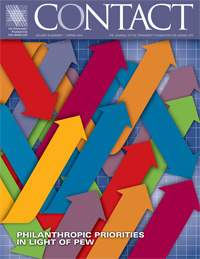
FROM THE EDITOR
PHILANTHROPIC PRIORITIES
IN LIGHT OF PEW
T he rumblings could be heard far and wide. Ominous chatter, faint at first, then building in frequency until it became an overwhelming and all-consuming cacophony. There was no longer any hope of denying it: We were being treated to another Study.
It happens every few years. A major survey is unveiled to gauge the pulse of a community. The research itself contains valuable information if understood within wider currents and contexts. It’s the reaction to the study that causes the din. First, grief: A massive outpouring of despair over an ostensibly dying community. This is followed by rage over programs that are deemed hopeless to stem the losses. Then comes hope, as the same people insist that their programs are the key to salvation. This lasts until the dawn of the next study, and the cycle repeats.
The Pew study was supposed to be different. Using a more reliable sample than that of any other survey of American Jews in history, the Pew study inspired hope that its sober analysis would beget thoughtful and reasoned discussion. But no sooner had the study been released than the spin was set: Jewish leaders across the board erupted in mourning for a dying community facing calamity. Overnight, an onslaught of op-eds, columns and symposia insisted that Pew proved their preconceptions, citing in particular a lack of interest in Jewish institutions as evidence of a lack of interest in Judaism. That people were finding new ways of relating to Jewish experience outside the walls of traditional institutions rarely entered the equation.
Now that the initial hysteria has subsided, it’s time to catch our breath and reflect on the insights and nuances of this comprehensive assessment of American Jewish life. Beyond the headlines, the Pew study is replete with data on all aspects of Jewish identity, affiliation and experience. It provides a portrait of a community in transition as individuals chart new ways of connecting to Judaism that are consistent with life in a society that fully accepts and often even celebrates Jewish culture. In particular, as the philanthropic world regroups to consider the most effective areas of resource allotment in light of the study’s findings, it behooves the community to approach the study with sobriety. With that in mind, articles in this issue of Contact explore the ramifications of the Pew study from a range of perspectives, from the possibilities of capitalizing on pervasive Jewish pride to the challenges institutions face in appealing to Jews today, from considerations of secular Jewish identity to insights into the myth of Orthodox outreach. Taken together, the essays use the Pew study as a springboard for reflections on how to strengthen and revitalize a community grappling with emerging Jewish identifications that often defy expectations and traditional norms.

Eli Valley
IN THIS ISSUE
| PREVIOUS ARTICLE | NEXT ARTICLE |
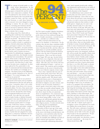 The 94 Percent
The 94 Percent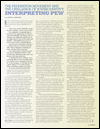 The Federation Movement and the Challenge of Jewish Identity: Interpreting Pew
The Federation Movement and the Challenge of Jewish Identity: Interpreting Pew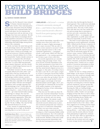 Foster Relationships, Build Bridges
Foster Relationships, Build Bridges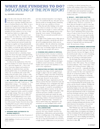 What Are Funders To Do? Implications of The Pew Report
What Are Funders To Do? Implications of The Pew Report 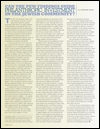 Can the Pew Findings Guide Philanthropic Investment in the Jewish Community?
Can the Pew Findings Guide Philanthropic Investment in the Jewish Community? 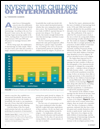 INVEST IN THE CHILDREN OF INTERMARRIAGE
INVEST IN THE CHILDREN OF INTERMARRIAGE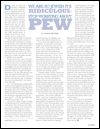 We Are So Jewish It’s Ridiculous: Stop Worrying About Pew
We Are So Jewish It’s Ridiculous: Stop Worrying About Pew 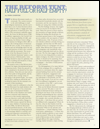 The Reform Tent: Half Full or Half Empty?
The Reform Tent: Half Full or Half Empty?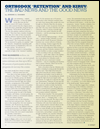 Orthodox “Retention” and Kiruv: The Bad News and the Good News
Orthodox “Retention” and Kiruv: The Bad News and the Good News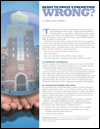 Ready to Prove A Prediction Wrong?
Ready to Prove A Prediction Wrong? 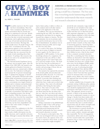 Give a Boy a Hammer
Give a Boy a Hammer 